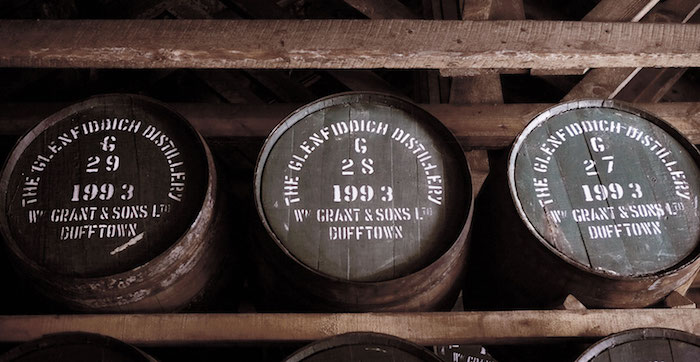One question that comes up occasionally is why Scotch distillers favor the ex-bourbon barrel so strongly. While many Scotches are finished in port, sherry, or wine barrels, the majority of Scotches spend the majority of their lives in barrels that once held bourbon. Why? Well, there’s quite a lot of history in the answer, so grab a dram and I’ll try to explain some of the reasoning behind it.
We’ll start with the people who have probably had the greatest effect on Scotch whisky: the English. For the better parts of the sixteenth through nineteenth centuries, the United Kingdom was a naval powerhouse. Of course, the large wooden ships constantly being built generated great strain on the oak forests of the island. Enter the French, who also built many great ships, but had the great foresight to begin forest conservation in the mid seventeenth century – not to mention the fact France is nearly three times larger than the United Kingdom in size. This meant they later had forests that could be used by coopers to make the large barrels needed for fermenting wines.

In the early nineteenth century, various treaties and political movements meant port and sherry could be imported in larger quantities. The spirits were shipped in casks and bottled at port. This meant the empty casks were available for use by thrifty distillers. The sweet wines held within the casks were quickly found to help mellow even the harshest of whisky and help younger spirits seem further along in aging. Reused casks would also impart their own unique flavor from the first fill, and the trend of reusing barrels quickly took off.
The next and possibly most important moment came when Prohibition ended and bourbon barrels became a strictly one-use commodity for the legal definition of American whiskey, the reasons of which we’ve talked about previously. This created a surplus of cheap, charred American oak casks. Also, the popularity of port and sherry had decreased in the U.K., so the influx of the commonly used barrels began to wither. Once again, the thrifty Scots saw an opportunity that would change the flavor of scotch tremendously.
With the addition of bourbon casks, most Scotch has become less sweet and lighter in flavor and color. It has also picked up the vanilla and heavy oak tones that are present in most bourbons. There are still a few distilleries that age in sherry or port casks, like Dalmore and Macallan, but for the most part they have been reserved for finishing whisky previously aged in the bourbon barrels.
So in summary, the primary reason behind the use of ex-bourbon barrels in aging Scotch has been cost. But, beyond that reason is a history of naval warfare, political movements and the preferred tastes of the United Kingdom.



